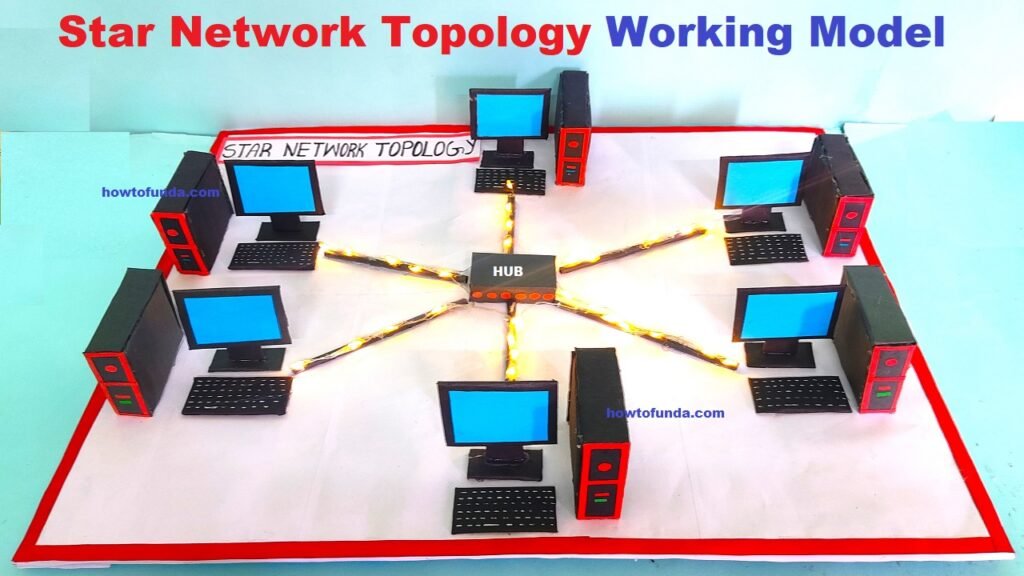Star topology is a type of network topology commonly used in computer networks, where all devices (nodes) in the network are connected to a central hub or switch.
In a star network, all communication between devices must pass through the central hub, which acts as a central point of control and management.
This topology is widely used in local area networks (LANs) and is popular in home and office setups.
#startopology #workingmodel #computerscience #exhibition #diy #modelmaking #howtofunda

Advantages of Star Topology:
- Simplicity and Ease of Installation:
- Setting up a star network is straightforward. All devices are connected directly to the central hub, making it easy to install and configure.
- Scalability:
- Star networks are easily scalable. Additional devices can be added to the network by simply connecting them to the central hub. This makes it suitable for growing network requirements.
- Isolation of Issues:
- If a problem arises with one device or connection, it does not affect the rest of the network. This isolation of issues simplifies troubleshooting and maintenance.
- Centralized Management:
- Since all devices are connected to a central hub, network administration and management can be centralized. This makes it easier to monitor and control the network.
- Performance:
- Star topology can offer good performance, especially in smaller networks, as each device has a dedicated connection to the central hub, minimizing congestion.
Types of Star Topology:
- Basic Star Topology:
- In a basic star topology, each device is connected directly to a central hub. This is the most common type of star network and is used in many home and small office setups.
- Extended Star Topology:
- In an extended star topology, multiple central hubs are connected to form a larger network. This allows for more devices to be connected and provides additional scalability.
- Distributed Star Topology:
- In a distributed star topology, multiple central hubs are connected, but each hub serves as a central point for a specific group of devices. This allows for more efficient management of larger networks.
Disadvantages of Star Topology:
- Dependence on Central Hub:
- The central hub is critical to the operation of the network. If it fails, the entire network can be affected. Redundancy measures are needed to mitigate this risk.
- Cost and Infrastructure:
- Setting up a star network can be more expensive compared to some other topologies. It requires the purchase of a central hub, which can be a significant investment.
- Limited Scalability in Large Networks:
- In very large networks, the central hub may become a bottleneck, especially if it lacks the capacity to handle a large number of connections.
Step by Step Video instructions on star topology working model
Conclusion:
Star topology is a popular networking architecture known for its simplicity, scalability, and ease of management.
While it may have some drawbacks in terms of cost and dependency on the central hub, its advantages make it a preferred choice for many LAN setups, including homes, small businesses, and office environments.
The centralized nature of star topology facilitates efficient network administration and provides a reliable foundation for communication among connected devices.

